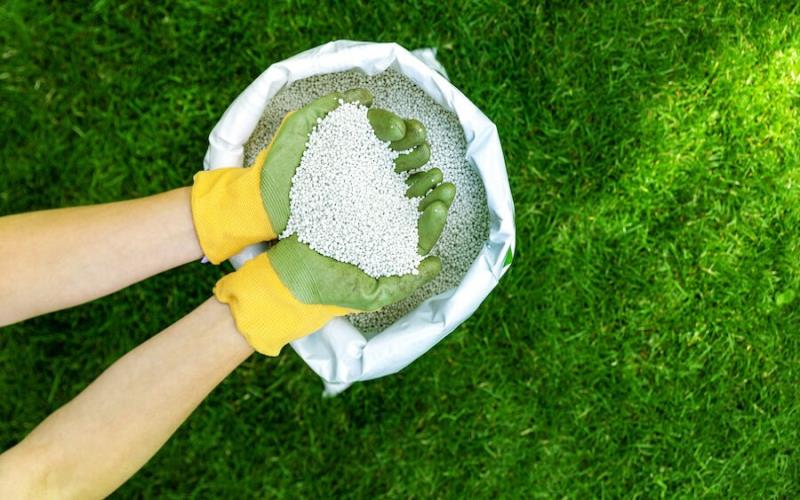Fertilising new turf is a crucial step in establishing a healthy and vibrant lawn. Whether you are laying down new sod or seeding a bare area, providing the right nutrients to your turf is essential for its growth and overall health. Fertilisers contain essential elements that promote root development, improve nutrient uptake, and enhance the overall appearance of your lawn. In this article, we will explore the importance of fertilising new turf, factors to consider before fertilisation, when to fertilise, signs that your new turf needs fertilisation, different types of fertilisers, how to choose the right fertiliser, dos and don’ts of fertilising new turf, best practices for fertilisation, and the benefits of properly fertilising your new turf.
Understanding the Importance of Fertilising New Turf
Fertilising new turf is important because it provides the necessary nutrients for the grass to establish strong roots and grow vigorously. When you lay down new sod or seed a bare area, the soil may not have enough nutrients to support healthy growth. Fertilisers contain essential elements such as nitrogen, phosphorus, and potassium that are necessary for plant growth. These nutrients help promote root development, improve nutrient uptake, and enhance the overall health of the grass.
There are several benefits to fertilising new turf. Firstly, it helps promote faster establishment of the grass. The nutrients in the fertiliser provide an immediate source of food for the young plants, allowing them to grow quickly and fill in any bare spots. Secondly, fertilising new turf helps improve the overall health and vigor of the grass. The nutrients in the fertiliser help strengthen the roots, making them more resistant to drought and disease. Additionally, fertilising new turf can enhance the color and appearance of the grass, giving your lawn a lush and vibrant look.
Factors to Consider Before Fertilising New Turf
Before fertilising new turf, there are several factors that you need to consider. Firstly, you need to determine the soil type and pH level of your lawn. Different types of grass have different nutrient requirements, and the pH level of the soil can affect nutrient availability. Conduct a soil test to determine the pH level and nutrient content of your soil. This will help you choose the right fertiliser and determine the appropriate application rate.
Climate and weather conditions also play a role in fertilising new turf. Different regions have different climate patterns, which can affect the growth and nutrient requirements of the grass. For example, in areas with hot and dry summers, you may need to use a slow-release fertiliser that can withstand high temperatures and provide nutrients over an extended period of time. On the other hand, in areas with heavy rainfall, you may need to use a fertiliser that is less likely to leach out of the soil.
The type of grass you have planted or are planning to plant also affects the nutrient requirements of your turf. Different grass species have different nutrient needs, so it is important to choose a fertiliser that provides the right balance of nutrients for your specific grass type. Research the specific nutrient requirements of your grass species and choose a fertiliser that meets those needs.
When to Fertilise New Turf: Timing is Key
Timing is key when it comes to fertilising new turf. The best time to fertilise new turf is when the grass is actively growing and the roots are establishing themselves in the soil. This typically occurs in the spring or fall, depending on your region and climate. Fertilising during these periods allows the grass to take up the nutrients and use them for growth.
There are several factors that can affect the timing of fertilisation. Firstly, consider the temperature and weather conditions. Fertilising during extreme heat or cold can stress the grass and cause damage. It is best to wait until temperatures are moderate and the weather is stable before applying fertiliser.
Secondly, consider the age of your new turf. If you have just laid down new sod, it is important to wait until the roots have established themselves before fertilising. This usually takes about 4-6 weeks. If you have seeded a bare area, it is best to wait until the grass has reached a height of 2-3 inches before fertilising.
Signs that Your New Turf Needs Fertilisation
There are several visual cues that indicate the need for fertilisation in new turf. One common sign is slow or stunted growth. If your grass is not growing as quickly as expected or is not filling in bare spots, it may be lacking essential nutrients. Another sign is a pale or yellowish color. Nutrient deficiencies can cause the grass to lose its vibrant green color and appear dull or yellowish. Additionally, if you notice patches of thin or sparse grass, it may be a sign that your new turf needs fertilisation.
Common nutrient deficiencies in new turf include nitrogen, phosphorus, and potassium. Nitrogen deficiency can cause slow growth and a pale green color. Phosphorus deficiency can lead to poor root development and weak plants. Potassium deficiency can result in poor drought tolerance and increased susceptibility to disease.
Different Types of Fertilisers for New Turf
There are several different types of fertilisers available for new turf. The most common types include granular fertilisers, liquid fertilisers, and organic fertilisers.
Granular fertilisers like Oxafert in Sydney are solid particles that are applied to the soil surface and slowly release nutrients over time. They are easy to apply and provide a slow and steady source of nutrients for the grass. Granular fertilisers come in different formulations, such as slow-release or quick-release, and can be tailored to meet the specific nutrient needs of your turf.
Liquid fertilisers are liquid solutions that are sprayed onto the grass. They are quickly absorbed by the plants and provide an immediate source of nutrients. Liquid fertilisers are often used for quick greening or to correct nutrient deficiencies. They are easy to apply and can be absorbed by the grass through the leaves and roots.
Organic fertilisers are derived from natural sources, such as compost, manure, or bone meal. They provide a slow-release source of nutrients and improve the overall health of the soil. Organic fertilisers are often preferred by those who want to avoid synthetic chemicals and promote sustainable gardening practices.
How to Choose the Right Fertiliser for Your New Turf
When choosing a fertiliser for your new turf, there are several factors to consider. Firstly, consider the nutrient requirements of your grass species. Different grasses have different nutrient needs, so it is important to choose a fertiliser that provides the right balance of nutrients. Look for a fertiliser that contains nitrogen, phosphorus, and potassium, as these are the primary macronutrients needed by plants.
Secondly, consider the soil type and pH level of your lawn. Some fertilisers are specifically formulated for certain soil types or pH levels. Conduct a soil test to determine the pH level and nutrient content of your soil. This will help you choose a fertiliser that is tailored to your specific soil conditions.
Lastly, consider the application method and ease of use. Granular fertilisers are typically spread with a broadcast spreader, while liquid fertilisers are sprayed onto the grass. Choose a fertiliser that is easy to apply and fits your preferred method of application.
Dos and Don’ts of Fertilising New Turf
To ensure successful fertilisation of your new turf, it is important to follow some best practices and avoid common mistakes. Here are some dos and don’ts of fertilising new turf:
Dos:
– Do conduct a soil test to determine the pH level and nutrient content of your soil.
– Do choose a fertiliser that provides the right balance of nutrients for your specific grass type.
– Do follow the recommended application rate and timing for the fertiliser.
– Do water your lawn after applying fertiliser to help activate the nutrients and prevent burning.
– Do mow your lawn regularly to promote even distribution of the fertiliser.
Don’ts:
– Don’t over-fertilise your lawn. Applying too much fertiliser can burn the grass and cause damage.
– Don’t apply fertiliser during extreme heat or cold. Wait until temperatures are moderate and the weather is stable.
– Don’t apply fertiliser to wet or waterlogged soil. Wait until the soil has dried out before applying fertiliser.
– Don’t apply fertiliser to newly laid sod until the roots have established themselves.
– Don’t apply fertiliser to newly seeded areas until the grass has reached a height of 2-3 inches.
Best Practices for Fertilising New Turf
To look after new lawn and achieve optimal results when fertilising new turf, follow these best practices:
1. Conduct a soil test: Before applying any fertiliser, conduct a soil test to determine the pH level and nutrient content of your soil. This will help you choose the right fertiliser and determine the appropriate application rate.
2. Choose the right fertiliser: Select a fertiliser that provides the right balance of nutrients for your specific grass type and soil conditions. Consider factors such as nutrient content, release rate, and application method.
3. Follow the recommended application rate: Read the instructions on the fertiliser package and follow the recommended application rate. Applying too much or too little fertiliser can lead to nutrient imbalances and damage to your turf.
4. Apply fertiliser evenly: Use a broadcast spreader or sprayer to apply the fertiliser evenly across your lawn. This will ensure that all areas receive the necessary nutrients for healthy growth.
5. Water after fertilisation: After applying fertiliser, water your lawn thoroughly to help activate the nutrients and prevent burning. Watering will also help distribute the fertiliser evenly throughout the soil.
6. Mow regularly: Regular mowing helps promote even distribution of the fertiliser and prevents clumping. Set your mower to the appropriate height for your grass type and avoid cutting more than one-third of the grass blade at a time.
Benefits of Properly Fertilising Your New Turf
Properly fertilising your new turf offers several benefits:
1. Improved growth and health of the grass: Fertilisers provide essential nutrients that promote root development, improve nutrient uptake, and enhance the overall health of the grass. This leads to faster establishment, vigorous growth, and a lush, green lawn.
2. Increased resistance to pests and diseases: Healthy, well-nourished grass is more resistant to pests and diseases. Fertilisers help strengthen the roots and improve the overall health of the grass, making it less susceptible to damage from insects and diseases.
3. Enhanced aesthetic appeal of the lawn: Fertilising new turf can enhance the color and appearance of your lawn. The nutrients in the fertiliser promote healthy growth and vibrant green color, giving your lawn a lush and attractive look.
Fertilising new turf is an important step in establishing a healthy and vibrant lawn. It provides essential nutrients that promote root development, improve nutrient uptake, and enhance the overall health of the grass. Before fertilising, consider factors such as soil type, climate, grass type, and nutrient requirements. Choose a fertiliser that provides the right balance of nutrients for your specific turf and follow best practices for application. By properly fertilising your new turf, you can enjoy improved growth and health of the grass, increased resistance to pests and diseases, and an enhanced aesthetic appeal of your lawn.

